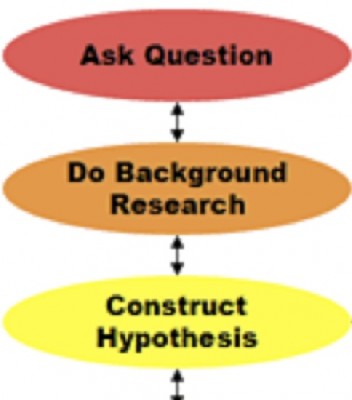[plulz_social_like width="350" send="false" font="arial" action="like" layout="standard" faces="false" ]
 Not sure how you”™d construct an experiment on this one
Not sure how you”™d construct an experiment on this one
If you”™ll recall from Blog post #5, we are doing our best to stick to “The Scientific Method” as we conduct our research. To that end, we have just accomplished three of the initial steps:
The Process So Far
- Select a topic of study
- Simplify the topic
- Conduct a review of the literature
Now it”™s time to form a simple and direct hypothesis to act upon. The word “hypothesis” is the fancy science term for basically “my best guess”. That”™s really OK since without an idea being a mere guess, we have no reason to do the research. We want to find out if our guess is true or not, and if it is true, the next phase of development would be to use that knowledge to make us (or our students) better riders.

Testability — Can It Be Measured
While it goes without saying, if one can prove something, one should be able to disprove it as well. Either outcome is acceptable if one can measure what is being studied. To do that, we must identify the Variables that are going to be specifically studied an used to prove or disprove our Hypothesis.
A Variable is a factor or element that can be changed and manipulated in ways that are observable and measurable. However, the researcher must also define exactly what each variable is using what are known as operational definitions. These definitions explain how the variable will be manipulated and measured in the study.
“These precise descriptions of each variable are important because many things can be measured in a number of different ways. One of the basic principles of any type of scientific research is that the results must be replicable. By clearly detailing the specifics of how the variables were measured and manipulated, other researchers can better understand the results and repeat the study if needed. (1).”
Our Variables for Muscular Endurance
Fortunately for us, the two variables that are being manipulated are also easily measured in our exploration of Muscular Endurance. These are Cadence and Heart Rate. Since we have used these to define the range at which one should expect the training effect to be activated or produced is defined by those very parameters. These would also be referred to as the “Independent Variables” since an independent variable is a variable that is manipulated in an experiment. We are going to have our subjects change their cadence and heart rate (through resistance or gearing).
The dependent variable is measured to determine if the manipulation of the independent variable(s) had any effect. In some ways, this is the more important variable to identify in that it represents the actual training result we are looking for. In this case, it is the Muscular Endurance of the legs. The problem is how to measure that. Unlike a proper research lab at a university, we do not have a near-infrared spectroscopy (NIRS) which estimates the relative changes in muscle oxygenation and blood volume during exercise.
That being said, it is true that researchers only began using this equipment in recent history, and so the practice of measuring one”™s physical ability (or that of one”™s legs) has been commonplace in this type of research and can be done with specific controlled riding drills.
The Hypothesis Formula
To “formalize” our hypothesis, we only need to construct it as an “If-then statement”. Specifically, it would be in the format:
IF Independent Variable = X and/or Independent variable = Y, THEN Dependent Variable should change (improve, increase, etc).
Specifically, our hypothesis would be formalized to look something like this:
IF a cyclist maintains a cadence within the range of 65 and 85 RPM while keeping their heart rate within a designated range of BPM (the middle of their Heart Zone 3 and 4) THEN improvements in Muscular Endurance will ensue after some period of repeated training sessions.
The next post will discuss the specific drills we will use to measure the level of Muscular Endurance in each of our study participants.
(1).Form a Hypothesis
By Kendra Cherry, About.com Guide
Originally posted 2012-05-31 12:23:44.
- Me & My Big Mouth - April 18, 2024
- Indoor Cycling Power Research #7: Good News, Bad News - August 16, 2023
- Blog Post #10 Baseline& Performance Testing - June 29, 2023

Hi Gino…..reading and enjoying (I don’t always have something to say…<>>)
Thanks,
Vivienne
Still… it’s good to know someone is reading 🙂
Thanks,
Gino
Maybe a lot of folk are like me……if I have a topic that I’m interested in, want to read, concentrate on and understand, I do it much better when I print it out than read directly from the screen. It’s not quite such an automatic thing to ackowledge someone’s effort when you do that.